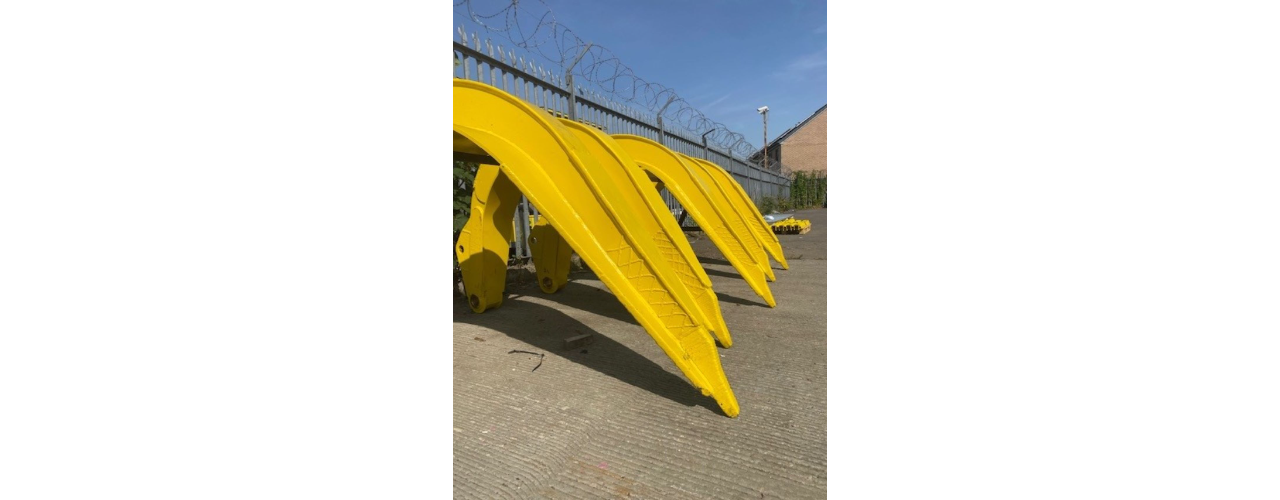The Role of Hardfacing in Waste Grab Petal Life Extension
In the bustling city of London, waste management is a critical function that ensures the city remains clean, safe, and environmentally responsible. Among the various equipment used in this sector, waste grab petals play a pivotal role in handling and processing waste efficiently. However, these components are subject to extreme wear and tear due to the harsh environments they operate in. This is where hardfacing comes into play, significantly extending the life of waste grab petals and enhancing the overall efficiency of waste management systems.
Understanding Hardfacing
Hardfacing is a specialized welding process that involves depositing a layer of wear-resistant material onto the surface of a base metal. This technique is designed to improve the durability and longevity of components subjected to severe abrasion, impact, and erosion. By applying a hardfacing layer, the underlying metal is protected, thereby extending the service life of the component.
Importance of Waste Grab Petals
Waste grab petals are crucial components in waste handling machinery, such as cranes and loaders, which are used to pick up, move, and load waste materials. These petals are constantly exposed to abrasive materials, corrosive substances, and high-impact forces, leading to rapid wear and eventual failure if not adequately protected.
The Benefits of Hardfacing for Waste Grab Petals
-
Enhanced Wear Resistance: The primary benefit of hardfacing is its ability to significantly enhance the wear resistance of waste grab petals. By adding a hardfacing layer, the petals can withstand the abrasive nature of waste materials, reducing the frequency of replacements and maintenance.
-
Cost Savings: Regular replacement of worn-out grab petals can be costly and time-consuming. Hardfacing extends the life of these components, leading to substantial cost savings in terms of both materials and labor.
-
Improved Operational Efficiency: Waste management operations rely on the continuous and efficient functioning of equipment. By minimizing downtime due to component wear, hardfacing helps maintain the smooth operation of waste handling systems.
-
Environmental Benefits: Extending the life of waste grab petals through hardfacing reduces the need for frequent manufacturing and disposal of these components. This contributes to a more sustainable approach by decreasing the consumption of raw materials and reducing waste generation.
Hardfacing Techniques for Waste Grab Petals
Several hardfacing techniques can be employed to enhance the durability of waste grab petals. These include:
-
Shielded Metal Arc Welding (SMAW): Also known as stick welding, SMAW is a versatile and widely used hardfacing method. It involves the manual application of a consumable electrode coated with a flux that produces a protective gas shield during welding.
-
Gas Metal Arc Welding (GMAW): Also referred to as MIG welding, GMAW uses a continuous wire feed as an electrode and an inert gas to protect the weld pool from contamination. This method is efficient and suitable for automated hardfacing processes.
-
Tungsten Inert Gas Welding (TIG): TIG welding uses a non-consumable tungsten electrode and an inert gas shield to produce high-quality hardfacing deposits. It is particularly useful for precision hardfacing applications.
-
Plasma Transferred Arc (PTA) Welding: PTA welding is an advanced hardfacing technique that uses a plasma arc to transfer powdered or wire-fed hardfacing material onto the substrate. This method provides excellent control over the deposition process and results in high-quality, wear-resistant coatings.
Selecting the Right Hardfacing Material
Choosing the appropriate hardfacing material is crucial to achieving the desired level of wear resistance and performance. Common materials used for hardfacing waste grab petals include:
-
Chromium Carbide: Known for its exceptional hardness and abrasion resistance, chromium carbide is often used in environments with severe wear conditions.
-
Tungsten Carbide: Offering superior wear resistance, tungsten carbide is ideal for applications involving high-impact and abrasive wear.
-
Stellite Alloys: These cobalt-based alloys provide excellent resistance to wear, heat, and corrosion, making them suitable for high-stress environments.
Conclusion
In the realm of waste management, the durability and efficiency of equipment are paramount. Hardfacing emerges as a vital solution for extending the life of waste grab petals, ensuring that these components can withstand the rigors of their operating environments. By enhancing wear resistance, reducing maintenance costs, and improving operational efficiency, hardfacing plays a crucial role in the sustainable and effective management of waste in London.
As the city continues to grow and the demands on its waste management systems increase, the adoption of advanced hardfacing techniques will be essential. By embracing these technologies, London can maintain its commitment to environmental responsibility and operational excellence, ensuring a cleaner and more sustainable future for all. For specialist advice and a no-obligation quotation, call IME on 02085996570 or email sales@imegroup.co.uk.

